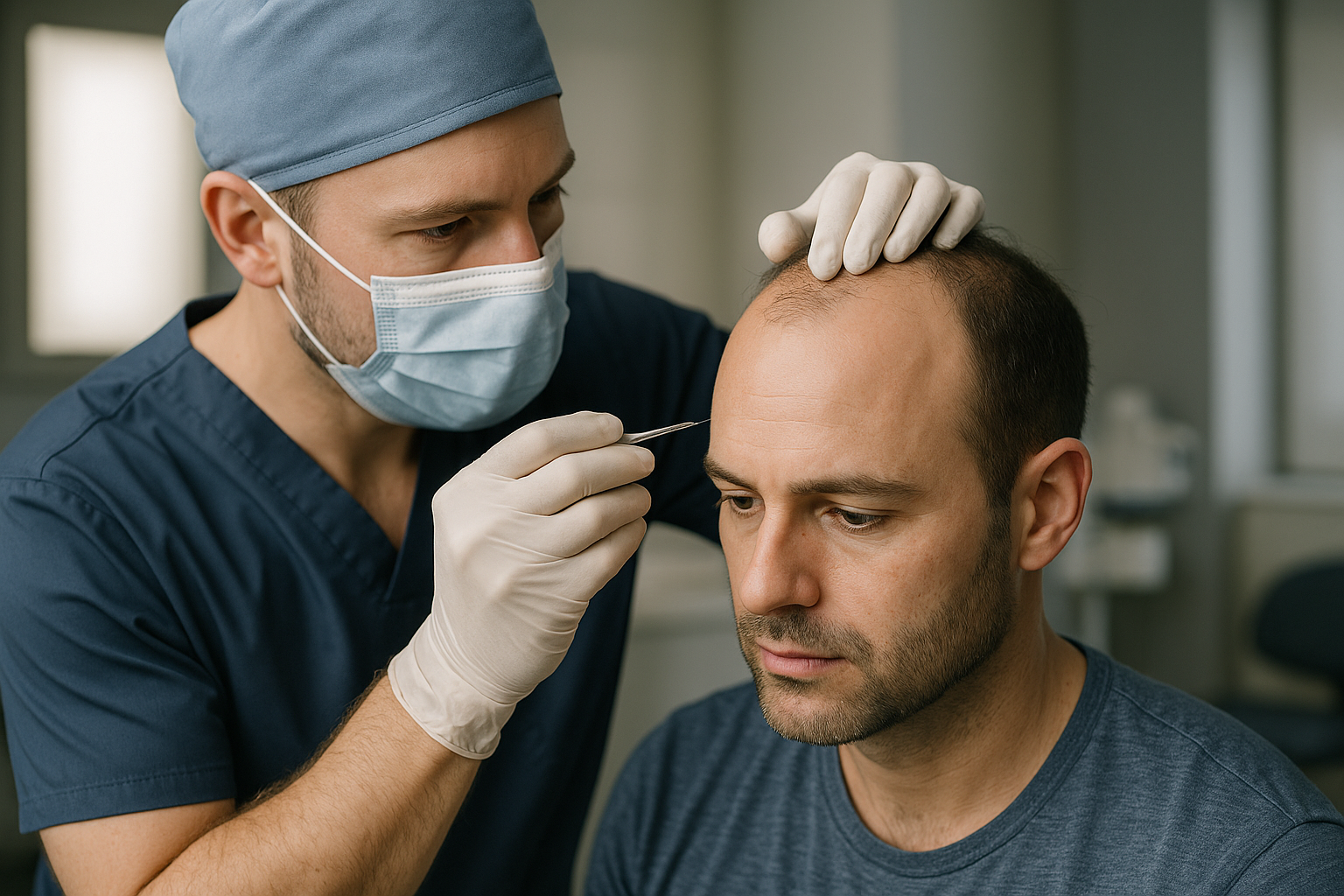Hair Restoration Explained: Science and Technique
Hair loss affects millions of people worldwide, impacting self-esteem and confidence. Hair restoration has evolved significantly over the past few decades, offering advanced solutions that blend medical science with artistic precision. From surgical transplants to non-invasive therapies, modern approaches provide effective options for those seeking to regain their natural hairline and density.

Hair restoration is no longer a mystery reserved for the elite or those willing to accept unnatural results. Today’s techniques combine dermatological research, surgical innovation, and personalized care to deliver outcomes that look and feel authentic. Whether you’re experiencing early thinning or advanced hair loss, understanding the science and methods behind restoration can help you make informed decisions about your treatment journey.
Understanding Hair Restoration
Hair restoration refers to medical and surgical procedures designed to address hair loss by stimulating regrowth or redistributing existing hair follicles. The most common causes of hair loss include genetic factors, hormonal imbalances, stress, nutritional deficiencies, and medical conditions. Restoration treatments aim to counteract these factors through targeted interventions. The two primary categories are surgical methods, such as follicular unit transplantation and follicular unit extraction, and non-surgical approaches, including platelet-rich plasma therapy, laser treatments, and topical medications. Each method works differently, targeting specific causes and stages of hair loss. Understanding your individual pattern and underlying cause is essential before selecting a treatment path.
Hair Restoration in India
India has emerged as a significant destination for hair restoration procedures, offering a combination of skilled practitioners, modern facilities, and competitive pricing. Major cities like Mumbai, Delhi, Bangalore, and Hyderabad host clinics equipped with international-standard technology. The medical tourism sector has also grown, attracting patients from around the world seeking quality care at accessible rates. Indian dermatologists and surgeons often train internationally and bring expertise in both traditional and cutting-edge techniques. Regulatory bodies ensure that clinics maintain hygiene and safety standards, though it remains important to verify credentials and patient reviews before committing to any procedure. The availability of diverse treatment options makes it easier for individuals to find solutions tailored to their specific needs and budgets.
Modern Technology and Expertise
Advancements in hair restoration technology have transformed the field, making procedures less invasive, more precise, and faster to recover from. Follicular Unit Extraction, for instance, uses micro-punches to extract individual hair follicles without leaving linear scars, unlike older strip methods. Robotic-assisted systems enhance accuracy, reducing human error and improving graft survival rates. Platelet-rich plasma therapy harnesses the body’s natural growth factors to stimulate dormant follicles, while low-level laser therapy encourages cellular activity and blood circulation in the scalp. Stem cell research is also opening new avenues, though clinical applications remain in developmental stages. Expertise matters as much as technology; experienced surgeons understand hairline design, graft placement angles, and density distribution to achieve natural-looking results. Choosing a practitioner with a proven track record and transparent communication is crucial.
What Affects the Cost
The cost of hair restoration varies widely based on several factors. The technique chosen plays a major role, with follicular unit extraction generally costing more than follicular unit transplantation due to its labor-intensive nature. The number of grafts required depends on the extent of hair loss and desired density, directly influencing the total expense. Clinic location, surgeon experience, and facility standards also contribute to pricing. Metropolitan areas with high demand and overhead costs tend to charge more than smaller cities. Additional factors include pre-procedure consultations, anesthesia, post-operative medications, and follow-up visits. Some clinics offer package deals, while others charge per graft. It is essential to request detailed breakdowns and compare offerings before making a decision.
| Procedure Type | Provider Example | Cost Estimation (INR) |
|---|---|---|
| Follicular Unit Extraction | Advanced Clinics in Mumbai | 40,000 - 150,000 |
| Follicular Unit Transplantation | Mid-Range Clinics in Delhi | 30,000 - 100,000 |
| Platelet-Rich Plasma Therapy | Dermatology Centers in Bangalore | 5,000 - 15,000 per session |
| Low-Level Laser Therapy | Specialized Hair Clinics in Hyderabad | 3,000 - 10,000 per session |
Prices, rates, or cost estimates mentioned in this article are based on the latest available information but may change over time. Independent research is advised before making financial decisions.
Post-Procedure Care
Proper aftercare is critical to the success of any hair restoration procedure. Immediately following surgery, patients should avoid touching or scratching the treated area to prevent infection and graft dislodgement. Sleeping with the head elevated for the first few nights reduces swelling. Most clinics provide specific shampoos and topical solutions to keep the scalp clean and promote healing. Strenuous physical activity, direct sun exposure, and swimming should be avoided for at least two weeks. Scabbing and shedding of transplanted hair are normal within the first month; new growth typically begins around three to four months post-procedure. Full results may take up to a year to become visible. Regular follow-up appointments allow the surgeon to monitor progress and address any concerns. Adhering to prescribed medications, maintaining a balanced diet, and managing stress further support optimal recovery and long-term hair health.
Conclusion
Hair restoration has become a sophisticated field blending science, artistry, and patient-centered care. With a range of techniques available, from surgical transplants to regenerative therapies, individuals facing hair loss have more options than ever before. Understanding the underlying causes, exploring modern technologies, evaluating costs, and committing to thorough aftercare are all essential steps in achieving successful outcomes. Whether seeking treatment locally or exploring options in your area, informed decision-making and choosing qualified professionals remain the foundation of a positive restoration experience.
This article is for informational purposes only and should not be considered medical advice. Please consult a qualified healthcare professional for personalized guidance and treatment.




